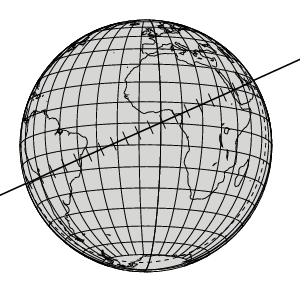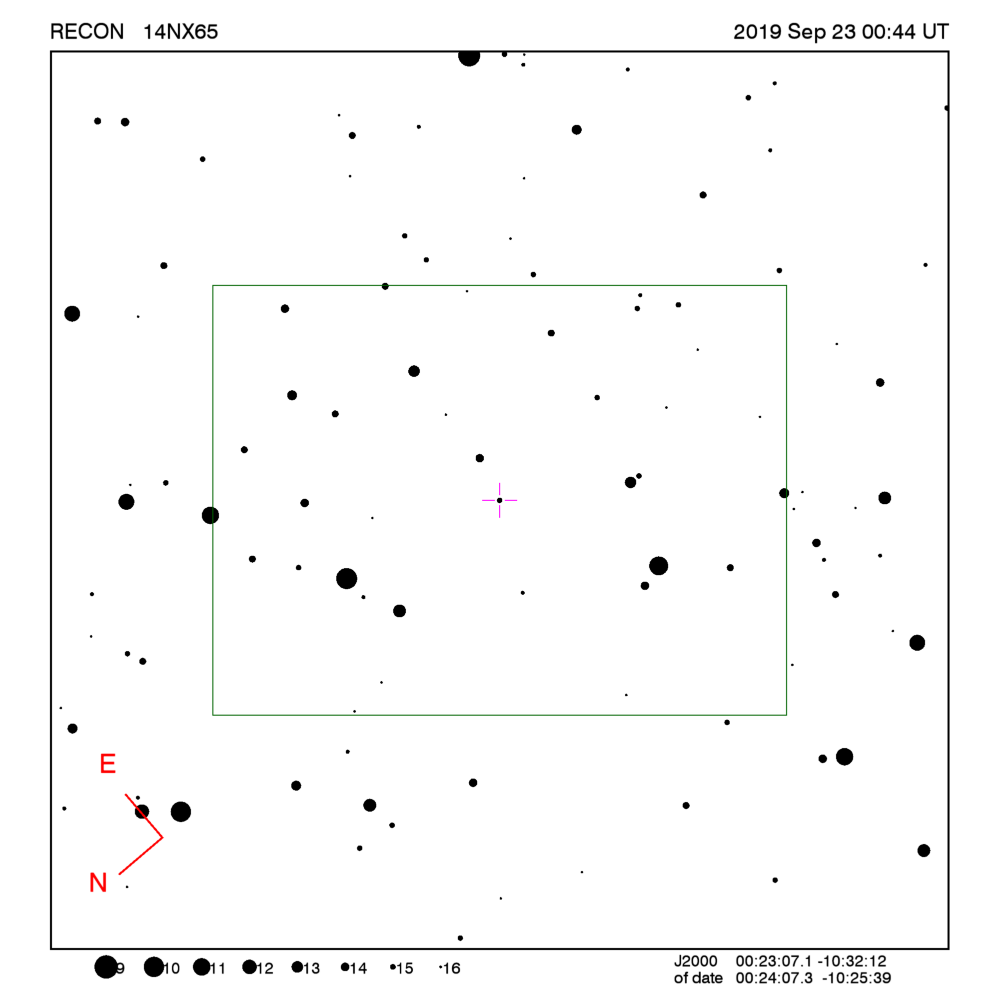RECON: TNO occultation with 14NX65
Event between 14NX65 and star GA0780:00031766
with event index number of 219344
Geocentric closest approach at 2019/09/23 00:43:54 UTC
J2000 position of star is 00:23:07.1 -10:32:12
Equinox of date position of star is 00:24:06.4 -10:25:44
Stellar brightness G=15.2,
use SENSEUP=128
Star is 100 degrees from the moon.
Moon is 40% illuminated.
TNO apparent brightness V=22.3
 TNO is 18.9 AU from the Sun
and 17.9 AU from the Earth.
TNO is 18.9 AU from the Sun
and 17.9 AU from the Earth.
The TNO is moving 22.3
km/sec on the sky relative to the star, or,
6.2 arcsec/hr.
The 1-sigma error in the time of the event is 64 seconds.
The 1-sigma cross-track error in the shadow position is
994 km.
The TNO has an absolute magnitude Hv=9.6
Diameter=71.8 km assuming a 5% albedo -- 3.2 sec chord
Diameter=29.3 km assuming a 30% albedo -- 1.3 sec chord
Dynamical classification is CENTAURR
Star training set for 14NX65, (2019/09/23 00:44UT)
Object RA Dec mag sep mel
Fomalhaut 22:58:44.2 -29:31:02 1.2 27.59 124
Diphda 00:44:34.7 -17:52:43 2.0 8.95 98
9 Cet 00:23:52.4 -12:06:00 6.4 1.67 100
PPM 182183 00:23:43.4 -09:30:49 8.5 0.92 100
PPM 208707 00:23:48.8 -10:27:58 9.8 0.08 100
14NX65 00:24:07.3 -10:25:39 15.2 100
Positions are for equinox of date

Azimuth is measured in degrees eastward from north.
North is at an azimuth of 0, due East is at an azimuth
of 90 degrees, due South is 180, and due West is 270.
Do not use the listing below for the RECON CPC 1100 telescopes.
This is provided for other non-team facilities.
Star training set for 14NX65, (2019/09/23 00:44UT)
Object RA Dec mag sep mel
Fomalhaut 22:57:39.5 -29:37:23 1.2 27.59 124
Diphda 00:43:35.7 -17:59:11 2.0 8.95 98
9 Cet 00:22:52.3 -12:12:33 6.4 1.67 100
PPM 182183 00:22:43.2 -09:37:22 8.5 0.92 100
PPM 208707 00:22:48.7 -10:34:31 9.8 0.08 100
14NX65 00:23:07.1 -10:32:12 15.2 100
Positions are for J2000
Event circumstances last updated at 2019/06/07 22:40:52 UT
Marc W. Buie,
Southwest Research Institute
RECON
 TNO is 18.9 AU from the Sun
and 17.9 AU from the Earth.
TNO is 18.9 AU from the Sun
and 17.9 AU from the Earth.
